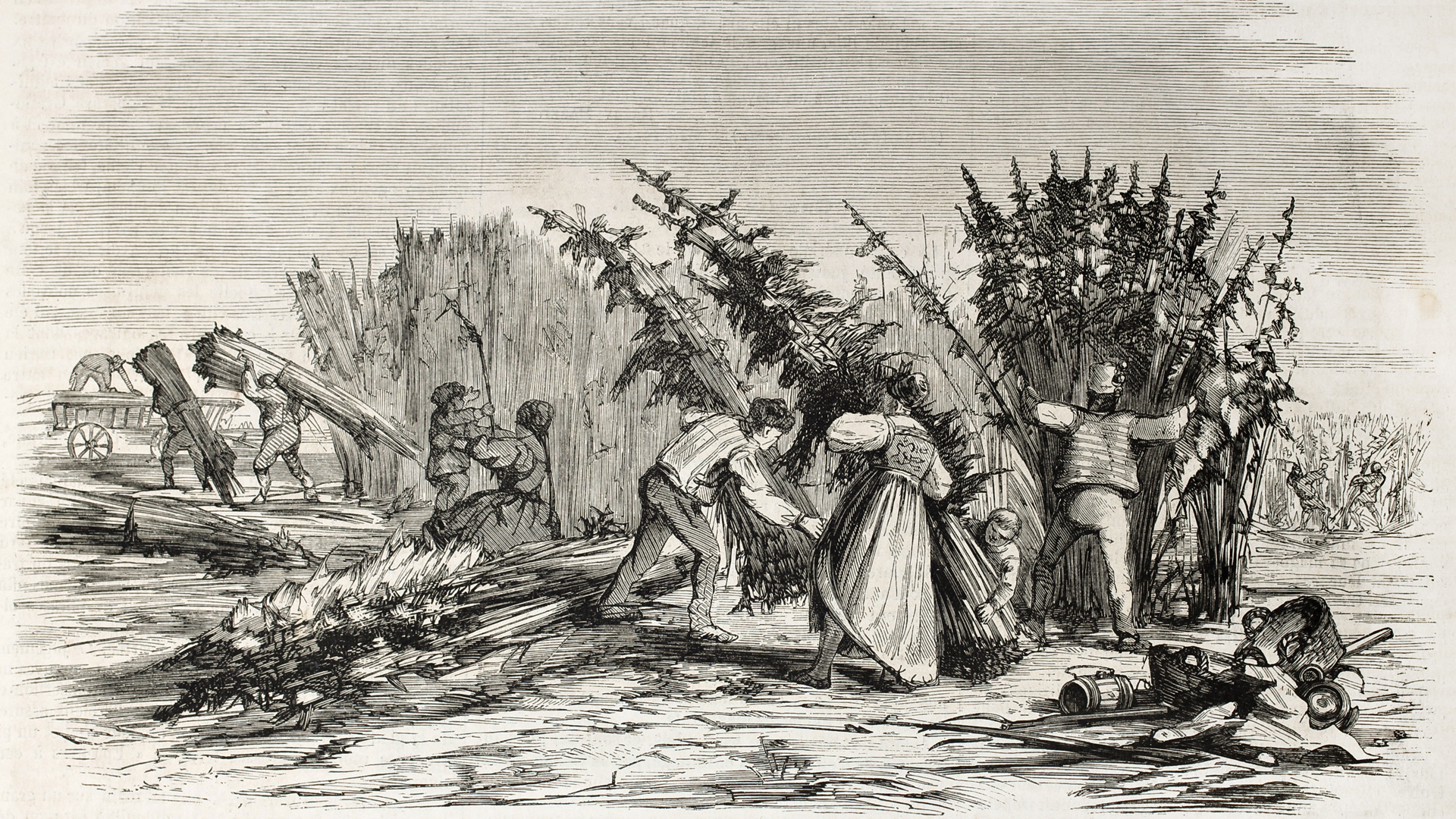What are cannabis extracts?
Cannabis extraction is every bit as complicated as the art of growing the plants used in the process.
A cannabis extract is any oil-like substance that concentrates the chemical compounds like THC or CBD from the cannabis plant. A variety of methods exist for separating cannabinoids from plant material and concentrating them into a cannabis extract.
Water, butane, alcohol, ethanol, and CO2 are all used as solvents to complete the extraction process and deliver a highly potent end product (hash, shatter, wax, budder, oil etc.) that are used for dabbing or vaporizing. Some of these products are not yet legal but are expected to join the marketplace sometime after legalization.
These extracts deliver a concentrated and highly potent method of consuming cannabis.
A brief history of cannabis extracts & concentrates
Cannabis concentrates have seemingly been around forever in one form or another.
Historians at High Times magazine claim that cannabis has been used since around 6000 BCE in China as food or for textiles. Cannabis extracts specifically first appeared sometime around 1500 BCE in the form of Bhang – a paste of ground cannabis that was added to ghee or milk as a drink, or eaten as a gooey paste ball.

Then in the 12th Century, the Middle East created hashish by collecting the crystals (trichomes) from dried cannabis plants and squeezing them into malleable, resinous chunks of concentrated cannabis.
Cannabis extracts or concentrates didn’t truly appear in North America until the mid to late 19th century in the form of hashish or cannabis tinctures. Cannabis was soaked in alcohol and sold as “miracle” tinctures to cure everything from toothaches to baldness.
During the 20th century, the American government outlawed cannabis in 1937 on the back of the famous anti-pot campaign launched by Harry Anslinger. The popularity of cannabis was kept alive, however, with the 1960’s and 70’s hippie counterculture embracing the plant and enjoying it in its concentrated form of hashish and oils.
Nowadays, marijuana has gone through a massive revival and with it has come the art of cannabis extraction to produce the new wave of concentrates.
What are some benefits of cannabis extracts?
- Enhanced cannabinoid purity
- Allows for tailored cannabinoid profiles to deliver specific effects to the user
- Provide accurate dosing when required
- Easily consumed inconspicuously (tinctures, pills, vapes or edibles)
- Less product needs to be consumed (vs. dried flower)
- Concentrates can enable stronger and longer lasting effects
Consuming cannabis extracts and concentrates
Smoking – As with traditional dried flower, cannabis extracts are often smoked in much the same way. This is especially true of extracts such as hashish and kief, which can be smoked on their own, or in water bongs, pipes, or added to dried flower or tobacco and smoked in a traditional joint.
Tinctures – Liquid extracts that can be taken orally as drops, added to food or applied directly to the skin
Vaporizers – Vaporizing is one of the cleanest ways to inhale a cannabis concentrate. Vaping creates a mist that is non-toxic, taking pressure off the respiratory system and providing a very private, non-intrusive way to consume cannabis. Extracts, like oil, wax, shatter and distillates can be vaped successfully.
Dabs – One of the biggest “new” methods of concentrate consumption is called “dabbing”. A metal, glass, or titanium skillet is heated so that the cannabis concentrate vaporizes when it touches the heated surface.
Pills & Edibles – Many people prefer to eat their cannabis, and extracts have made it incredibly simple to do so. Infusing edibles with cannabis oils or tinctures provides a smoke-free, convenient method of taking cannabis that allows for the ultimate in private consumption. Cannabis extract pills are even easier. The effects of ingesting cannabis are also different, tending to last much longer when compared to inhaling cannabis.
Variety in cannabis extraction: Solvent & Solventless
To achieve cannabis in concentrate form, the cannabinoids of the plant must be extracted and condensed into as pure a form as possible.
A number of different ways can be used to isolate the valuable cannabinoids found in the cannabis plant. Extraction methods that involve solvents are very popular and provide a quality product, but require professional equipment and knowledge to get right.
Solventless methods are simple, natural but do not offer the same THC and cannabinoid percentages. Some methods are superior and provide better taste, enhanced terpene retention and a pure product.
Dry-sieve Extraction (Solvent-less)
Dry-sieve extraction typically involves taking dried cannabis plants and beating or shaking them against a mesh screen so that the trichome crystals fall off and can be collected. Known as “kief”, this powder can be consumed as is, mixed with dried flower or pressed into hashish.
THC content typically ranges from 35 to 50 percent.
Water Extraction (Solvent-less)
Water extraction, also known as water hash or bubble hash is made by adding cannabis plants to a set of sieve-like bags submerged in freezing cold water and stirred. The cold and stirring causes the trichomes to fall off the plant and pass through a progressively tighter series of collection screens.
The result is a kief or hashish that can be dabbed or smoked and provides THC levels from 50 to 70 percent.
Rosin Press Extraction (Solvent-less)
Rosin is a cannabis concentrate that has a buttery or shatter-like consistency and is produced without using additives or solvents to extract the trichomes from the plant material. Instead, heat and pressure are used to extract the trichome rich resin that contains the beneficial ingredients of the cannabis plant.
Isopropyl Oil or Quick-Wash ISO Extraction (Solvent)
Referred to as an ISO Wash, this extraction method involves taking dried cannabis flower and soaking it briefly in isopropyl alcohol. Once soaking, the mixture of ISO and flower is shaken gently and then strained into a separate dish.
The isopropyl alcohol works to strip the trichomes from the plant material into the solvent. The concentrated liquid then has any remaining solvent evaporated in a vacuum oven at under 181-degree Fahrenheit until a potent THC rich oil remains. ISO wash extract is typically filled with cannabinoids but also contains some chlorophyll, waxes and plant alkaloids.
The longer the soak, the more plant material will also be extracted, an undesirable side effect of this extraction method.
Butane Honey Oil Extraction (BHO)
Butane extraction has been made famous in the food and perfume industries but has since been repurposed for cannabis extraction due to its powerful potency and excellent terpene retention.
To perform a BHO extraction, a vessel or column is filled with cannabis, and a filter attached at one end. Cans of butane are sprayed through the cannabis to extract the cannabinoids, and the cannabinoid-rich butane is collected in another vessel. The solvent and cannabinoid mix is then left to evaporate or is purged in a vacuum oven.
BHO extraction can be very dangerous if not done correctly as the butane gas being used is extremely flammable. Advancements have created professional BHO extraction machines that are closed-loop systems that keep the solvent sealed as it passes through the cannabis material, and under pressure so that it’s liquid form is maintained.
A vacuum oven works to purge the solvent residue from the oil and leaves behind a golden coloured oil that typically measures around 80 percent THC. This method is popular for producing many types of shatter, waxes, crumbles, and oils.
Supercritical Co2 Oil Extraction (Solvent)
Another famous extraction method, Supercritical CO2 extraction is a great way to get all those amazing cannabinoids separated from the cannabis plant material. It is also the safest (non-toxic) and reusable, environmentally friendly solvent extraction method.
Better yet, for all the health-conscious cannabis users out there, no trace amounts of toxins are left behind in the finished product. Supercritical CO2 is already being used as a safe industrial solvent in many industries including coffee, tea, fruit extracts, vanilla, omega-3 oils, perfumes, hop-oil for beer and lots more. The same CO2 is nontoxic and is used in soft drink cans to provide fizz.
This extraction process also does not contribute to atmospheric carbon emission increases.
To begin extracting, supercritical CO2 is heated, which raises the pressure of the liquid CO2 that is then passed through the cannabis buds to extract the valuable cannabinoids. Then the liquid CO2, now full of extracted cannabinoids, passes through a separator that breaks it down into constituent parts. Trichomes and terpenes are collected, while the supercritical CO2 gas is moved into a condenser to liquefy again before being recycled back to a storage tank.
Then the collected extract is left out at room temperature so the remaining CO2 can evaporate into the atmosphere.
CO2 extraction does require a finely tuned piece of equipment but is very popular in the industry thanks to being both safe and highly efficient at creating the highest quality cannabis extracts.
Supercritical CO2 extraction enables only selected compounds to be extracted with some small adjustments to the equipment. The shelf life of the extract is also prolonged due to CO2 acting as a sanitizing agent.
This method of extraction is great for making oil, shatter, budder or wax, depending on how the temperature, pressure, flow rate and solvent-to-feed ratio are tuned.
Ethanol Extraction (Solvent)
Using ethanol to extract THC has quickly become a favourite of many cannabis producers alongside the popular BHO and CO2 extraction methods. Ethanol extraction is safe, effective and efficient, combining many of the best aspects of other extraction methods. Ethanol is “generally regarded as safe” for human consumption by the FDA and is used extensively as a food additive or preservative. Ethanol extraction is a great option for commercial production of high-quality oils, distillates, edibles and other cannabis concentrates.
Basically, cannabis is soaked in ethanol to extract all the cannabis goodness from the plant. Then the resulting wide spectrum extraction is purged and refined for purity. Even though ethanol is a “polar” solvent and thus ends up extracting unwanted chlorophyll, the refinement process removes any unwanted compounds producing some of the purest and best tasting THC concentrates.
The process is safe, dependable and sustainable, and so long as it’s properly refined, makes a great option for both scalable commercial and niche level concentrate production.
One extraction method to rule them all?
Everyone has their own favourite method, leaving the title of “Connoisseurs Choice” still up for grabs. Many love CO2 or ethanol extraction, while others swear by BHO. Some home hobbyists even enjoy a good old quick ISO wash. All the different methods have their pros and cons, so your preference will largely depend on what elements of an extract are most important to you and your reason for producing concentrates.
Cannabis extracts are a great alternative to dried flower because these concentrates can offer amazing flavourful taste and a clear high in an easy to use format. The production process is also more environmentally friendly, and depending on the extraction method used, there may be no toxic chemicals in use (CO2 or ethanol extraction). Most extraction methods also don’t require the use of heat which can denature or damage fragile terpenes, and operators can often control which compounds are extracted.
The process of extraction also often kills microbial bacteria and excels at producing shatter, budder, wax, oil, and liquid for vaporizers or E-pens.
